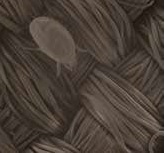Some Useful Tips On Allergy Control
Studies have shown that if these Allergy Control measures are put into practice, it is possible to reduce or even prevent certain symptoms of dust mite, mould or animal dander allergies. You will find that many of these Tips are common sense but some are not so obvious. Use the information below as a checklist and always discuss the best course of action with your doctor. The most important rooms to deal with are the bedroom and family room, where most time is spent.
Allergy Control General Measures
Use an efficient and powerful vacuum cleaner regularly.
Fit a HEPA filter to the vacuum cleaner if one is not already fitted.
Keep carpets, soft furnishings and toys to a minimum and use an anti-house dust mite treatment on what has to stay.
Avoid using heavy fabric curtains and Venetian blinds.
Use roller blinds if possible.
Relative humidity should be kept as low as possible.
Keep clothes in a closed cupboard.
Use a damp cloth or a dust-attracting cloth when cleaning.
Use wooden or plastic furniture rather than upholstered furniture, wherever possible.
Wear a dust mask when making beds, cleaning and dusting.
Allergy Control In the Bedroom
Encase mattresses, pillows and duvets with allergy barrier covers
Avoid using bunk beds without allergy barrier covers.
Avoid using feather filled pillows and duvets, especially if dust covers are not fitted.
Use manmade fibre pillows and duvets that can be hot washed at 600C.
Avoid woollen blankets—use manmade fibres instead.
Hot wash bedding and change it regularly.
Keep animals out of bedrooms at all time.
Avoiding moulds—outdoors
Don’t spend time in buildings where hay or grain is stored.
Don’t go into buildings that are obviously damp and musty.
Avoid cutting grass, raking leaves and turning compost heaps.
Avoid walking near fields during grain harvesting.
Keep well away from piles of rotting leaves and wood.
Avoiding moulds—indoors
Don’t spend time in damp attics, cellars and sheds.
Keep all bathroom surfaces clean.
Clean inside your refrigerator regularly.
Get rid of old foam rubber pillows and mattresses.
Don’t store clothing or shoes in damp cupboards.
Don’t wait until food goes mouldy before disposing of it.
Avoiding animal allergens
Encase mattresses, pillows and duvets with allergy barrier covers
Avoid using bunk beds without allergy barrier covers.
Avoid using feather filled pillows and duvets, especially if dust covers are not fitted.
Use manmade fibre pillows and duvets that can be hot washed at 600C.
Avoid woollen blankets—use manmade fibres instead.
Hot wash bedding and change it regularly.
Keep animals out of bedrooms at all time.
For more detailed information on the Tips listed here, please refer to the relevant pages in our Self Help Guide
“decreasing exposure to dust mite allergens is an effective part of the treatment of asthma, rhinitis and atopic dermatitis”
“first, that effective avoidance is primarily based on physical rather than chemical measures, second, that effective avoidance requires a full regimen in the bedroom”
“Allergen avoidance remains a cornerstone of treatment of allergic patients who present with rhinitis, asthma or atopic dermatitis”
Extracts from Allergen Avoidance by Thomas A.E. Platts-Mills, MD, PhD one of the world’s foremost authorities on the topic of dust mite allergens.
Allergy Clin Immunol Vol 113 Number 3 2004

Mite on tight weave micro-fibre

 Cat outside
Cat outside
Further details on Allergy Control are shown in this article from the American Academy of Allergy Asthma and Immunology:
http://www.aaaai.org/conditions-and-treatments/library/at-a-glance/indoor-allergens